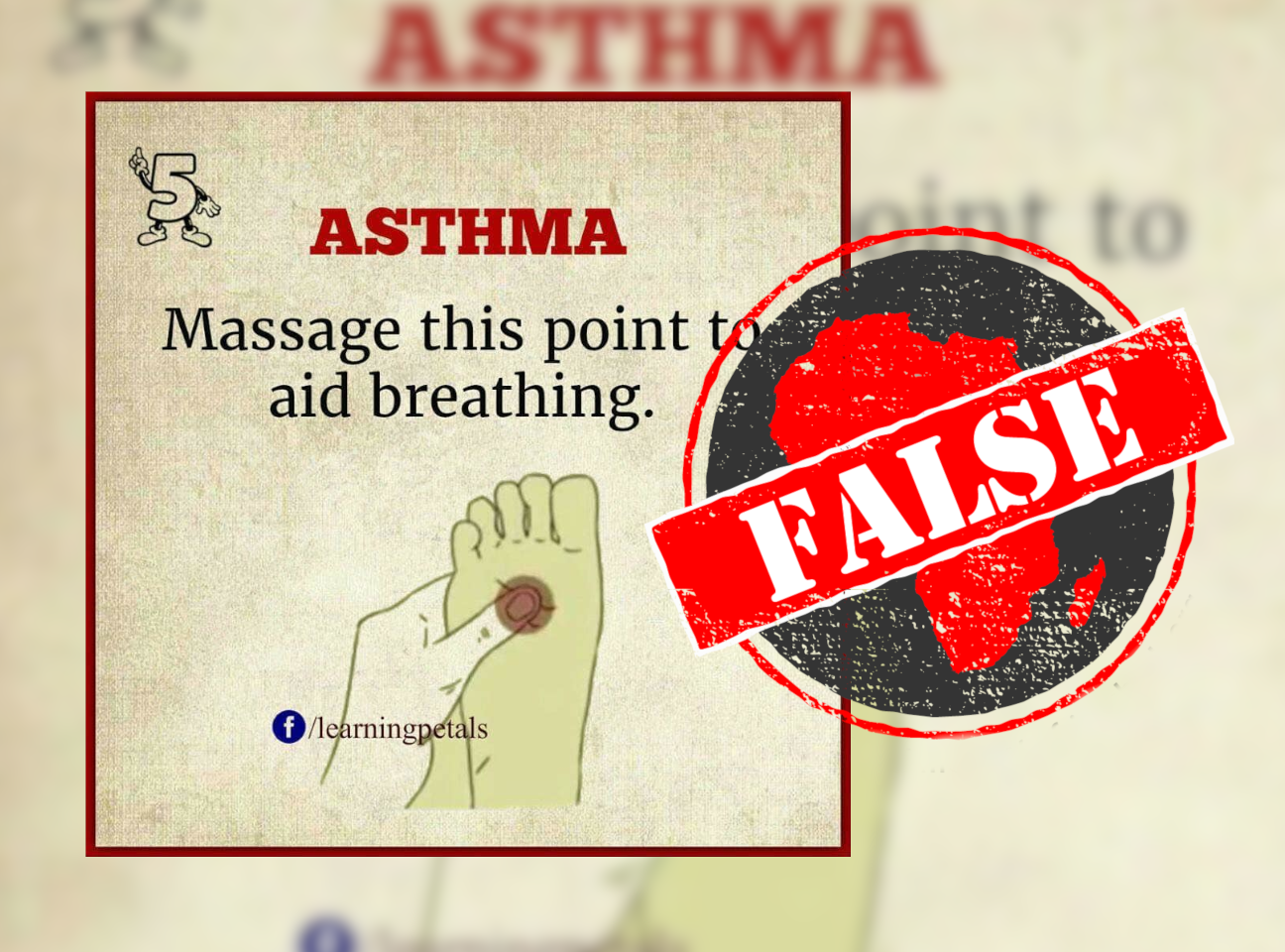A graphic shared on Facebook claims that massaging the middle of the foot will help people with asthma.
The graphic shows an illustration of the thumb placed on the middle of the sole of the foot.
Under the heading “asthma” is text that reads: “Massage this point to aid breathing.”
But is there any truth to this? We checked.

Understanding asthma
Asthma is a non-communicable disease caused by the inflammation and narrowing of the airways in the lungs.
The symptoms include coughing, wheeziness, shortness of breath and chest tightness. It is the most common chronic disease among children, according to the World Health Organization (WHO).
People who have more severe symptoms may need emergency services and asthma can lead to death if not managed. The condition affects hundreds of millions of people globally, leading to about half a million deaths annually.
A number of factors such as exposure to allergens, irritants and pollutants can trigger an asthmatic attack.
Treatment not medically proven
The WHO says “inhaled medication can control asthma symptoms and allow people with asthma to lead a normal, active life”.
Bashir Isa Waziri, a lecturer with the department of physiology in the health sciences college at Bayero University in Kano in northwestern Nigeria, told Africa Check that taking slow deep breaths could help lower the heart rate.
But this didn’t mean that a foot rub would aid breathing in an asthmatic patient, said Waziri.
Arthur Chuemere, a professor of physiology and biophysics at the University of Port Harcourt in southern Nigeria, said the claim was false and advised people to stick to the medication prescribed by certified doctors.
“It has no scientific basis, please disregard the advice,” said Chuemere.
Republish our content for free
For publishers: what to do if your post is rated false
A fact-checker has rated your Facebook or Instagram post as “false”, “altered”, “partly false” or “missing context”. This could have serious consequences. What do you do?
Click on our guide for the steps you should follow.
Publishers guideAfrica Check teams up with Facebook
Africa Check is a partner in Meta's third-party fact-checking programme to help stop the spread of false information on social media.
The content we rate as “false” will be downgraded on Facebook and Instagram. This means fewer people will see it.
You can also help identify false information on Facebook. This guide explains how.


Add new comment